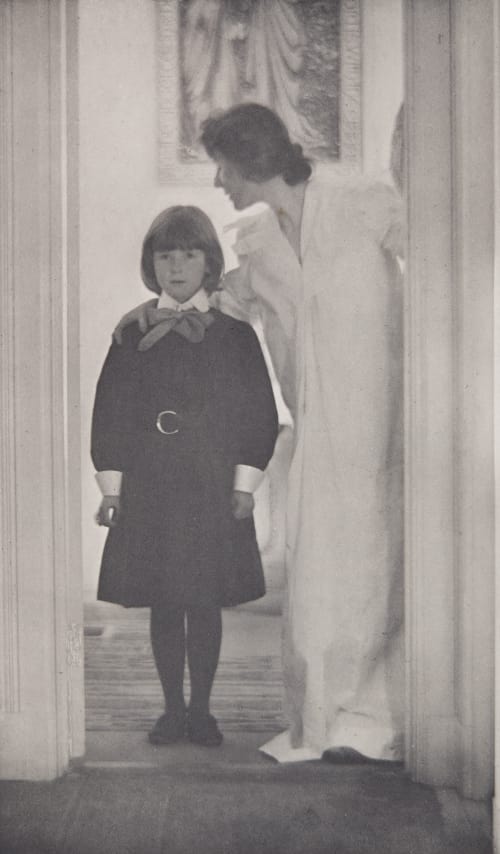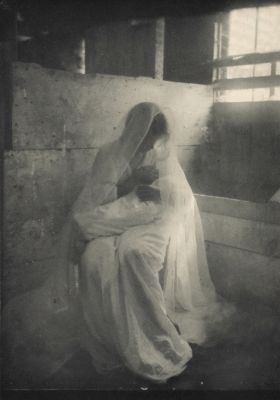
Title
Blessed Art Thou among WomenArtist
Kasebier, Gertrude (American, 1852-1927)Publication
Camera Notes Vol. 4 No. 1Date
1899Process
PhotogravureAtelier
Photochrome Engraving Company, New YorkImage Size
14.2 x 23.4 cm
Gertrude Kasebier did not begin to take photographs until she was almost forty. After practicing with the new medium on members of her family, she opened a studio for portrait photography in Paris in 1894, followed by another in New York in 1897. The mother-child relationship was a central motif in Kasebier’s work throughout her career. Her double portrait of Agnes Rand Lee, an American writer and author of children’s books, and her daughter Peggy is a case in point. Its title, Blessed Art Thou Among Women, derives from the painting of an Annunciation scene in the background. The angelic look of the mother is underscored by her flowing reform dress. She escorts the little girl through a doorway as if into the wide world. Although the child hesitates on the threshold as if afraid to take the decisive step, her gaze and pose convey self-confidence. It became her most famous work when Alfred Stieglitz published it first in Camera Notes and the American Pictorial Photography portfolio and then in the first issue of his pioneering journal Camera Work in 1903. [1]
"the photograph also evokes the idyllic domesticity of the Arts and Crafts Movement" MET Museum
Reproduced / Exhibited
Doty, Robert M. Photo-secession: Photography As a Fine Art. N.Y: Eastman, 1960. plate XIX.
Fassbender, Adolf, and Christian A. Peterson. The Pictorial Artistry of Adolf Fassbender. , 1994. p. 21
Homer, William I. Alfred Stieglitz and the Photo-Secession. Boston: Little, Brown and Company, 1983. no. 35.
Weaver, Mike. The Photographic Art. Edinburgh, 1986. no. 56
The Art Institute of Chicago
References
Langer, Freddy, Timm Starl, and Wilfried Wiegand. Icons of Photography: The 19th Century. Munich: Prestel, 2002. p. 120 [1]


